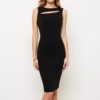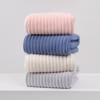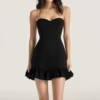Purchasing wholesale clothing is a strategic move for any boutique, offering the potential to secure high-quality apparel at competitive prices. However, to make the most of this opportunity, it’s essential to approach the process strategically. Here’s a comprehensive step-by-step guide to help you identify key factors and maximize your wholesale buying experience.
Step 1: Define Your Brand and Customer Base
Before you embark on buying wholesale clothing, it’s crucial to have a clear understanding of your boutique’s identity and the customers you aim to serve. Ask yourself:
- What is your boutique’s unique selling proposition?
- Who is your target audience? (e.g., age, gender, style preferences)
- What are the latest trends or needs your customers are looking for?
This information will guide your buying decisions, ensuring that the clothing you purchase aligns with your boutique’s brand and appeals to your target market.
Step 2: Research and Identify Reliable Suppliers
Finding the right wholesale suppliers is a critical step. Look for suppliers who:
- Specialize in the type of clothing you need: Whether it’s casual wear, formal attire, or accessories.
- Have a good reputation: Read reviews and seek recommendations from other boutique owners.
- Offer competitive pricing: Compare prices across multiple suppliers to ensure you’re getting the best deal.
Platforms like Stylebuy are excellent for finding a network of verified wholesale fashion vendors. Their user-friendly interface allows you to browse a wide variety of products easily.
Step 3: Evaluate Product Quality
Quality should be a top priority when purchasing wholesale clothing. Even if you’re buying in bulk, the quality of the clothing directly impacts your boutique’s reputation. Here’s what to look for:
- Fabric Quality: Check if the fabric is durable, comfortable, and matches the product descriptions.
- Stitching and Finishing: Ensure that the stitching is neat and there are no loose threads or unfinished hems.
- Consistency: Request samples to confirm that the quality is consistent across different batches.
Step 4: Understand Minimum Order Quantities (MOQs)
Wholesale suppliers often have a Minimum Order Quantity (MOQ) that buyers must meet. Familiarize yourself with these requirements, as they’ll affect your purchasing plan:
- Assess your budget: Make sure you can afford the MOQ without over-extending your budget.
- Validate demand: Ensure there is sufficient demand for the quantity you’re purchasing to avoid overstocking.
Step 5: Negotiate Terms and Pricing
Don’t hesitate to negotiate with suppliers. Often, you can secure better terms or discounts, especially if you’re a returning customer or placing large orders. Here are some negotiation tips:
- Be polite but assertive: Establish a professional relationship while clearly stating your needs.
- Ask for samples before committing: This ensures you receive products that meet your standards.
- Seek volume discounts: Inquire if larger orders come with better pricing or payment terms.
Step 6: Inspect Shipping and Handling Processes
How a supplier ships and handles their products is crucial. Here’s what to consider:
- Shipping costs: These can add up, so factor them into your overall budget.
- Delivery times: Ensure that delivery schedules align with your seasonal inventory needs.
- Packaging: Well-packaged goods reduce the risk of damage during transit.
Step 7: Build Relationships with Suppliers
Strong relationships with suppliers can lead to exclusive deals, priority access to new collections, and better negotiating power. Maintain open communication and show appreciation for good service. Some tips include:
- Consistent Ordering: Regular orders can help establish a stable business relationship.
- Feedback: Provide constructive feedback to help suppliers improve and meet your needs better.
Step 8: Stay Updated on Trends
Fashion is ever-evolving, and staying updated on the latest trends is essential. Subscribe to fashion magazines, follow industry news, and attend trade shows to ensure your boutique remains trendy and appealing.
Conclusion
Buying wholesale clothing is a nuanced process that requires careful planning and thorough research. By defining your brand, selecting reliable suppliers, evaluating product quality, understanding MOQs, negotiating effectively, inspecting shipping processes, building strong relationships with suppliers, and staying updated on trends, you can ensure that your boutique remains stocked with high-quality, appealing products.
Ready to start purchasing wholesale? Sign up on Stylebuy today and discover a wide array of fashionable, high-quality products for your boutique!
Related

















































